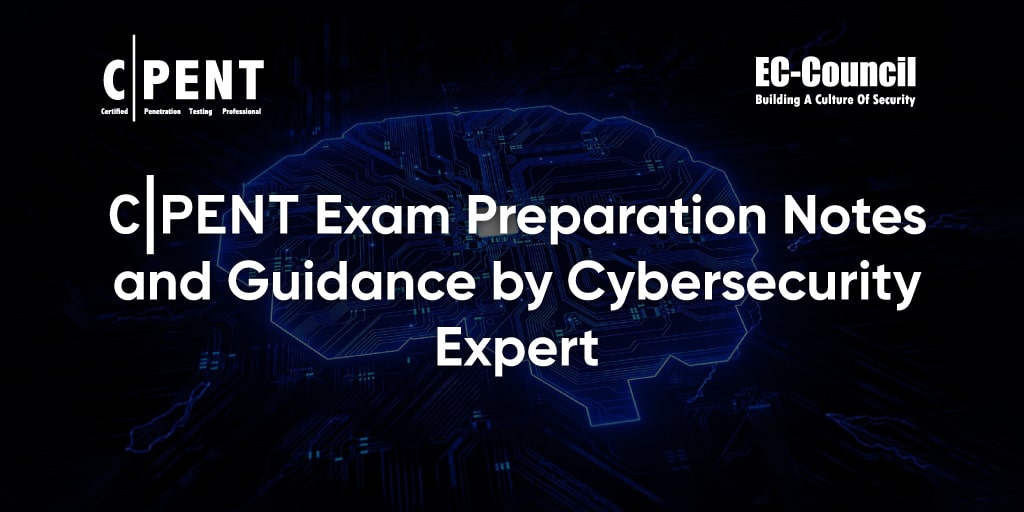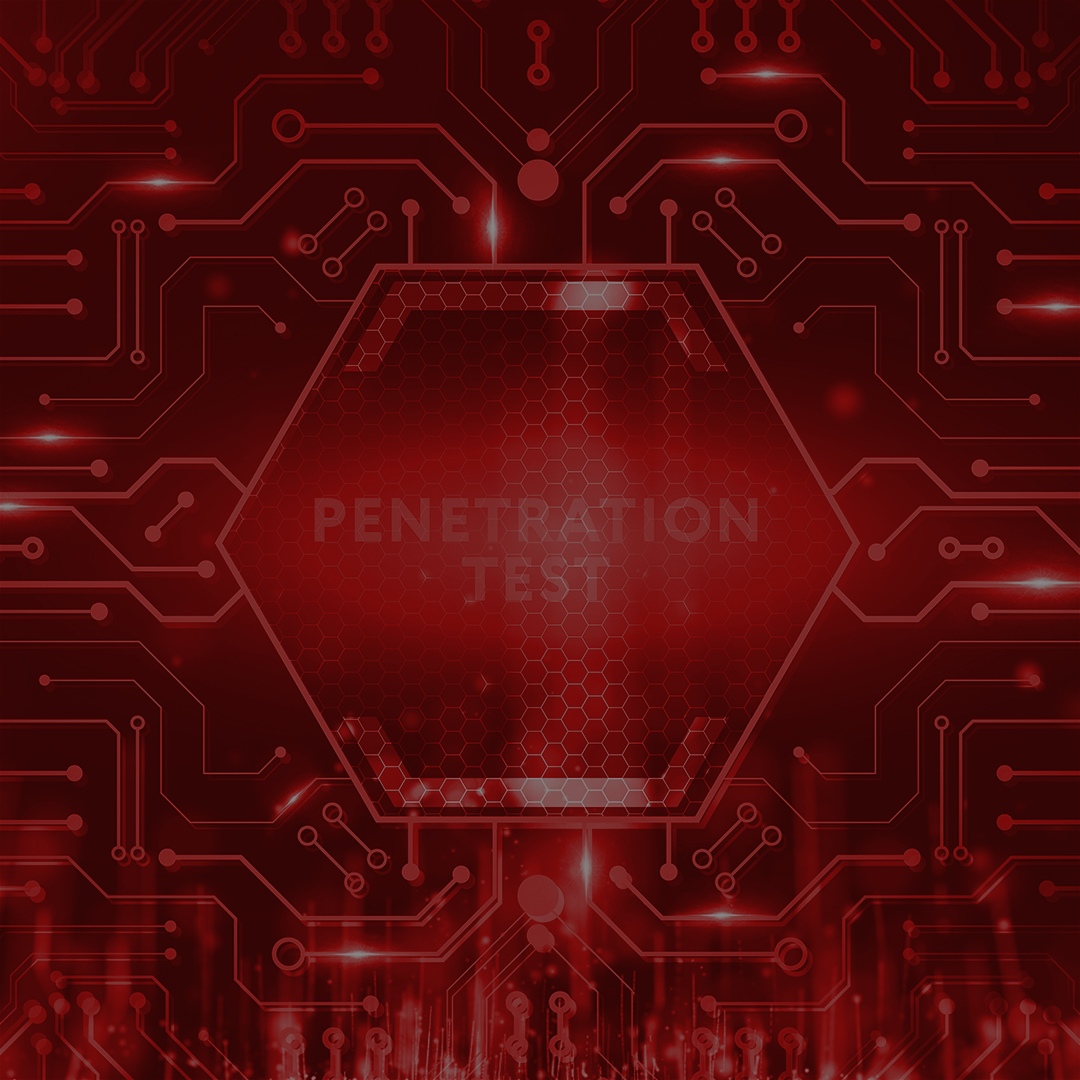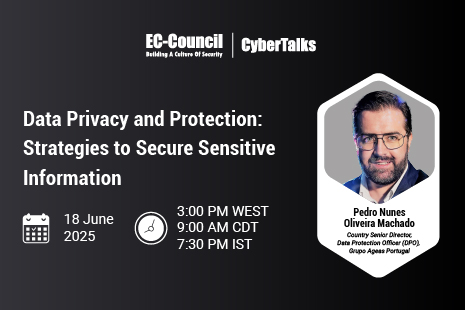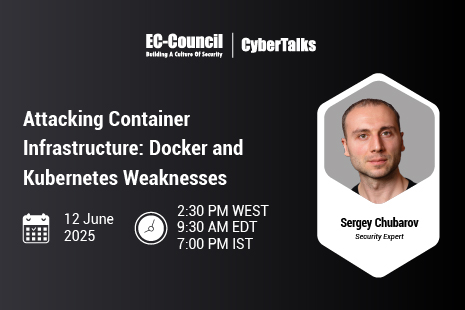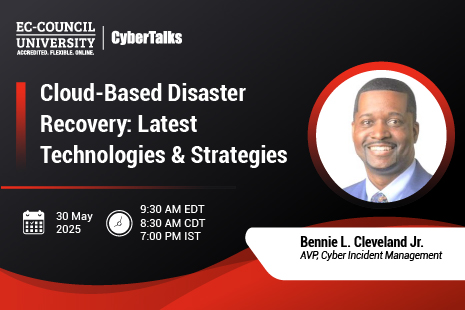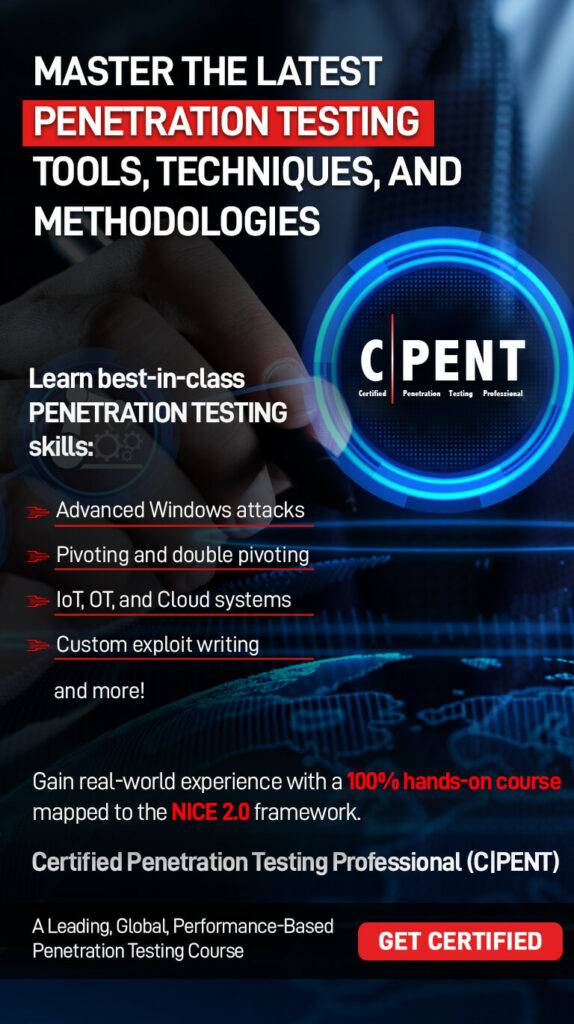As an author, professor, and researcher, I don multiple hats. I will share my Certified Penetration Testing Professional (C|PENT) exam preparation notes, my learning journey, and how I succeeded in acing the C|PENT examination. Even though I opted for the two 12-hour exam format, I believe that attempting it in the 24-hour setting is better as you can finish it in less than nine hours if you have extensive experience.
It is a very challenging exam because, unlike other penetration testing and offensive security exams focusing on Capture the Flag (CTF), the C|PENT includes real-world testing scenarios. In addition, their Cyber Ranges are more advanced and difficult than the simulated machines in other certifications. Although the C|PENT has been labeled as “insanely difficult!” due to my experience teaching penetration testing courses and having written multiple books about pen test, cybersecurity, and Linux, I did not find it to be “insanely tough.” While the exam is quite challenging, it was interesting as it closely mimics the real-world penetration testing environment.
How the C|PENT Differs from Others
The C|PENT stands out from other certifications as it covers extensive topics such as penetration testing scoping and engagement, open-source intelligence (OSINT), mobile device penetration testing methodology, IoT penetration testing, etc. It also includes firewalls, demilitarized zones (DMZs), web application firewalls (WAF), and other defensive measures. The C|PENT also covers pivoting, double pivoting, weaponization, and binary exploitations.
Important C|PENT Preparation Notes
Before signing up for the C|PENT program, ask yourself, “how much knowledge will I gain, and will it open the door to multiple opportunities?”
I began my preparation journey by watching all the course videos before diving into the program material. Ensure that you read all the content as there is always something new to learn, even if the topic seems repetitive. For example, even though I am familiar with Linux and have written a book about it, I was surprised to discover new concepts and tricks. One of the best things about the C|PENT curriculum is that you learn to execute the same thing in different methods, ensuring that you have a backup plan.
C|PENT Preparation Guidance
Let me share some C|PENT exam preparation notes that will help you maximize your performance in the exam:
- Ensure You Have a Database of Command in Hand:
You cannot waste time searching for the command that will provide you root or admin access during the exam. In addition, don’t be scared to use the “man” and the “apropos” commands, as they will help you search a set of database files containing short descriptions of system commands for keywords, display, and the result on the standard output. - Practice on Labs and Cyber Ranges:
Make sure that you practice all the exploits and concepts. I built the aliases, functions, and scripts in Bash and Python while doing the labs and Cyber Ranges, and after extensive practice, I was able to memorize most of the aliases. - Gain In-Depth Understanding of the Topics:
I strongly encourage you to practice pivoting and double pivoting if you are unfamiliar with them. When you cannot reach a machine directly, you may not know how to attack it at first, but a basic understanding of networking and subnets function will benefit you in the long run. Read the scope of work, take notes, identify which network addresses are included in the scope of work, and develop the target database template, just as you would for a real penetration testing scenario.
Where Candidates Fall Short
Many candidates often do not utilize specific, customized scans to find targets and do not examine network data at the packet level to understand what the network is telling them. Some use default scans instead of custom scans against a firewalled and non-firewalled target while finding targets that they assume are filtered or have a filter but do not know what works and does not.
You will often find yourselves unable to comprehend what the network is attempting to communicate. You must let the network show you the route in the C|PENT. The scans could take a long time if you conduct default and aggressive scans of all ports. You must let the network lead you in the C|PENT. Candidates often struggle to examine the syntax and ensure that the selections were input correctly because they lack the necessary permissions to write to the location where the firmware file system was being extracted.
The main goal of conducting a pen test is to evaluate the network and use that information to locate a flaw and obtain access. Examining the information presented by the network and acquiring access may seem challenging to some.
C|PENT Experience
I believe the C|PENT closes the gap between the security analyst and the penetration tester job-roles because of the knowledge you stand to gain. You need to think outside the box and build a creative mindset to master the content covered in the exam. It also provides a progressive approach to the challenges provided. Earning the certification helps you gain a competitive advantage in the industry.
C|PENT Tips in Brief
- The C|PENT is a tough exam but provides real-world experience
- Watch all the videos and read all the content even if it seems repetitive, as you might discover new information
- Use the “man” and the “apropos” commands to search a set of database files containing short descriptions of system commands for keywords, display, and the result on the standard output
- Make use of the labs and Cyber Ranges
- Practice pivoting and double pivoting
Contributor Bio
Alfred Basta, PhD. is a professor, researcher, and author of many publications, including “Computer Security and Penetration Testing,” “Linux Operations and Administration,” “Database security,” and “Mathematics for Information Technology.” He is one of the most certified professionals in cybersecurity. In addition to his recently completed Certified Penetration Testing Professional (C|PENT) and certification and Licensed Penetration Tester (Master), he holds the C|CISO, C|HFI, C|CSA, C|EH, E|CIH, and C|CSE certification.
More C|PENT Preparation Advice
Amit Agarwal, a research-oriented technology specialist in the field of telecommunications, has shared exclusive insights about the C|PENT exam and his learning journey. He highlights how the program equips you with real-world knowledge of penetration tests and what you can expect when you step into the cybersecurity domain. To find out how he cracked this challenging exam, read the full blog at: https://www.eccouncil.org/cybersecurity-exchange/penetration-testing/amit-agarwal-cpent-review-tips/


